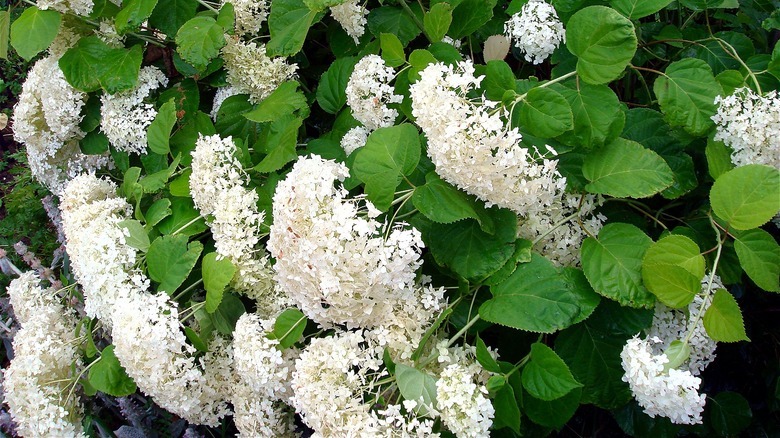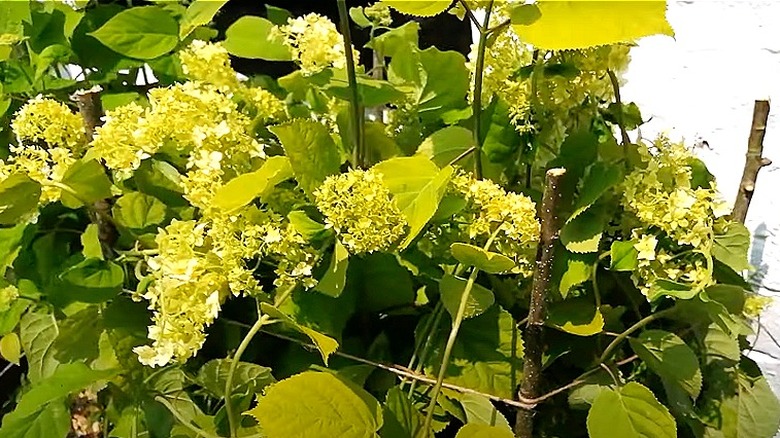How To Make A DIY Hydrangea Support To Prevent Drooping
Hydrangeas, i.e., hortensia, sometimes face a common problem: drooping. As the plant produces its large, lush flower clusters (aka corymb) during the growing season, the weight of these voluminous blooms can turn a hydrangea top-heavy, and ultimately lead to the plant's branches bending. Other factors, such as stress from heat, windy conditions, and excessive nitrogen, can also contribute to a drooping hydrangea plant. However, a DIY support system made from spare branches and some garden twine can be your hydrangeas' saving grace.
Hydrangea plants are notably thirsty, and can quickly wilt and sag from heat stress or if not adequately watered. And so, consistent and appropriate watering is crucial to maintain their turgidity and prevent drooping. Strong winds or rain can also exacerbate the issue by bending the branches, potentially leading to damage or extreme droopiness. Excess nitrogen in the soil, meanwhile, can also factor into a drooping hydrangea as fertilizing causes the hydrangea to grow fast and produce flowers but also end up with leggy stems.
And so to help your hydrangea plant, it's important to figure out the root cause of the plant's droopiness, as well as provide the plant with support until it can get its health back. This said, this DIY hydrangea support system is a good preventative measure, too, in anticipation of hot weather or windy conditions. By fencing your hydrangeas in, you can help them fight gravity and possible breakage.
DIY hydrangea supports with branches and twine
To build your hydrangea support system, start by finding the right stakes. If using branches, choose sturdy hardwood branches. Alternatively, as Mark's Garden UK notes, via YouTube, you can use bamboo canes, like you can find at a garden center. Whatever you choose, you just want the supports to be straight with a relatively smooth surface.
Once you've chosen your stakes, it's time to DIY your hydrangea support system, which is essentially a four-sided fence made of branches/canes and twine that will help the hydrangea grow upward rather than flop to one side or the other. To start, position the stakes around the hydrangea plant in a quadrant. At this point, the branches/canes will be much taller than the hydrangea plant, but eventually, they will be snipped down to size.
Next, tie your twine around one of the stakes — leaving about 6 inches of tail — and snip off enough twine to go around the circumference of the hydrangea. Then, twist the twine around the second stake, move on to the third and do the same. Continue this until you reach the first stake and then knot it with the tail. This creates your structure, pulling the stakes toward the center of the plant.
Now, repeat this process, only lower, and as you do, gently pull the drooping hydrangea leaves toward the center and inside the twine. Do this three times, creating three levels about 6 inches to 1 foot apart, depending on how big your plant is. Lastly, snip off the excess branches/canes at the top and your DIY hydrangea support system is complete.

